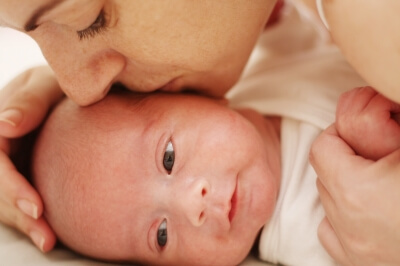What Does The Delivery Phase Consist Of?

Pregnancy, childbirth and delivery are periods in which very important changes occur. The delivery phase is the last stage of labor and it starts from the birth of the baby until the expulsion of the placenta and the ovular membranes.
This natural process allows your body to recover and also represents a change in lifestyle for you and your entire family. It is a change that you must gradually adapt to.
Delivery is the last stage of labor in which the uterus contracts, ending with the emergence of the placenta. This process can take up to 30 minutes and sometimes longer.
In some cases, the doctor assisting with the labor will massage the fundus of the uterus in order to help you expel the placenta.
Currently, according to the Practical Guide for Parents, released by the Spanish Association of Pediatrics, there is a tendency to quicken the delivery phase by injecting oxytocin which causes the uterus to contract which in turn causes the placenta to emerge quickly.
This injection is administered in order to reduce maternal bleeding. When there is less bleeding there is a lower chance for mothers to develop postpartum anemia.
In the event that the placenta does not go out naturally, the doctors can perform a manual removal. In order to do this, in the case of a mother that did not opt for an epidural, it is necessary to sedate the woman because it is a very bothersome procedure.
It is important to recognize this period as a unique and special situation which you must experience with satisfaction and fullness. In this final phase, the link between the newborn and mother are extremely close. Have confidence in your own ability to face this situation with security in order to have a successful outcome.
-Association of Spanish Pediatrics, Practical Guide for Parents-

What is the puerperium?
After the delivery of your child, a process called puerperium begins. It is the process that occurs from the end of labor until the recovery of the genital organs and the reappearance of the menstrual cycle.
Its duration ranges between 6 and 8 weeks and it is divided into three phases or stages. The first phase is called the immediate puerperium and it understood as the first two hours after delivery.
The second stage is known as the intermediate or mediate puerperium. It consists of the following 10 days after delivery. Finally, the last stage known as late puerperium begins and ends when the woman experiences her first menstruation after giving birth.
This final stage sometimes takes longer to appear; in some cases, it can take up to 6 months if breastfeeding is maintained.
In the final stages of puerperium, the new mother should be monitored and attended to by midwives – sometimes primary care nurses – through “puerperal visits.” This is done in order to follow-up and evaluate postpartum recovery.
There’s more
After delivery, hemorrhage called “lochia” occurs. It is similar to menstrual bleeding; it is abundant during immediate puerperium but it will diminish as the days go by.
In addition, small discomforts may occur. Discomforts such as pain in the perineum area; this is especially true if the mother was given stitches for an episiotomy or other injuries during delivery.
New mothers may also experience a feeling of fatigue and tiredness. This can be alleviated with adequate rest.
Abdominal pain may also be experienced by the new mothers. It occurs due to the contraction of the uterus in order to reduce itself to its initial size.
Some mothers feel relief after the secretion of oxytocin during breastfeeding. However, in some cases, analgesics can be useful in order to relieve discomforts.
Don’t be nervous, after the birth of your child try to adapt to the new situation.
Face the situation confidently, with the support of your family and the peace of mind knowing that you are capable of handling all the emotional, psychological, societal and family changes that are taking place in your life.
All cited sources were thoroughly reviewed by our team to ensure their quality, reliability, currency, and validity. The bibliography of this article was considered reliable and of academic or scientific accuracy.
- Santoja, J. La evolución del parto normal. Ciencia Ginecológika. 2003; 6: 378- 83.
- Cabero L, Saldívar D, Cabrillo E. (2007). Obstetricia y medicina materno-fetal. Buenos Aires, Madrid: Editorial Médica Panamericana.
This text is provided for informational purposes only and does not replace consultation with a professional. If in doubt, consult your specialist.








